Kirsten
Dunn DIY Northwest Flower & Garden Festival team:
First off, thank you for joining us for this year’s Northwest Flower & Garden Festival (NWFGF)—we couldn’t do it without you. It’s going to be tons of fun, and I have every confidence that you all will do a wonderful job representing not just Dunn DIY, but Dunn Lumber as a whole.
I know a lot of you are new to the NWFGF. This post should help you know what to expect and how to prepare, but if you have any questions whatsoever, if you get lost, are running late—anything at all!—please feel free to call, text, or email me at any time (call or text is best if you need a quick response). I’ll be there to open the booth every morning and walk the first shift through any info they may need. The NWFGF is my first priority, so please, please, please contact me fore even your smallest questions or concerns. I'm on call during show hours, so especially if you have questions about where you're supposed to go or what you're supposed to do please contact me (Kirsten at 206-446-8297 or kirstend@dunnlumber.com). For other questions, or if you're unable to get a hold of me, you can contact Todd (todd@dunnlumber.com or 206-618-7786), just keep in mind that he's also working the Home Show and so he's a little less available.
Now, let’s get to it!
How to Engage Guests and Talk About Dunn DIY
I like to give people a quick Dunn DIY introductory sentence at the show that goes something like this: “Dunn DIY is Dunn Lumber’s do-it-yourself blog where we post weekly project tutorials with photos, videos, and step-by-step instructions.” You’re welcome to come up with your own variation that hits all the major points.
The festival is fast-paced and people won’t stop at our booth for long, so having a short and sweet sentence like this on the tip of your tongue is important. In that same vein, working the booth requires a mild level of aggression. People may walk right by the booth without making eye contact, and that's fine—let them go on their way. Engage those who pause or make eye contact by greeting and/or offering them a seed card in hopes they'll stop and chat for a moment (or ask a question). I find the window for initiating interaction is pretty small at this show, so be comfortable with jumping in quickly. Introduce them to Dunn DIY or ask them a question—preferably one where the answer isn't "yes" or "no," but one where their answer will lead to further conversation. Don't worry—you'll get the hang of it and be able to match your interaction to their level of engagement. In summary, don't make people stop, just be welcoming.
Getting to Know Dunn DIY
The more familiar you are with Dunn DIY, the more comfortable you’ll be at the festival. It’s hard to talk about something if you don’t know what it is, so I’d encourage you to explore dunndiy.com and visit some of our most recent posts. Because we’re building up for the show, the recent content is garden-themed and will be referenced in some way during the show, whether physically in our booth or present on a flyer, poster, or video.
Beyond browsing the blog, here are some helpful answers to commonly asked questions with some extra details you might find helpful:
What is Dunn DIY?
Dunn DIY is a blog. We post weekly on Tuesdays. For the most part, the posts are project tutorials with photos and written instructions, but once a month, we include a video. Most of the posts are lumber-related, but we also throw in some lifestyle content—like a sewing tutorial—every so often. Almost all of these posts either are an addition to a previous wood related project, or are connected to my family and include a personal anecdote (or both)—this helps people connect with Dunn Lumber as a family company operated by real people, and helps give the blog more character and personality. One of the goals of Dunn DIY is for Dunn Lumber to make friends with the people in our community.
Can other people be involved with the blog?
Working with other people in their homes takes an incredible amount of coordination, timing, and like-mindedness which rarely happens. People are always welcome to (and should!) suggest tutorials for things they want to build in their homes, but the chances of us coming to their home and building something for them is extremely unlikely. Occasionally, people who run their own blogs want to partner with us. If you meet someone who fits in either of these categories, direct them to the “submit an idea” section on dunndiy.com, or have them shoot us a message on Facebook.
What’s the purpose of Dunn DIY?
Some people get confused because they don’t understand the real reason behind Dunn DIY. They want to know what the catch is and how Dunn Lumber is benefitting, so it’s important for you to know what the point is. Put simply, Dunn DIY is a way for Dunn Lumber to connect with homeowners. It’s our way of getting our name in front of them, telling them what we’re about (quality and customer service), and sharing our products and services. Giving away free tutorials and helpful advice gives new customers a taste of what our sales team is like. So remember, you're at the booth selling Dunn DIY, but Dunn DIY is also a sell for you as the people in our stores.
How long has Dunn DIY been around?
We’re coming up on six years in June and this is also our sixth year at the NWFGF.
Festival Etiquette
Just as in your regular job, you’re an ambassador for Dunn DIY and Dunn Lumber. Represent well!
- Make eye contact with guests
- Smile
- Greet (Hello!, Hi!, Are you familiar with Dunn DIY?, How far did you come to get to the show today?, etc.)
- Converse at the guest’s comfort level—not everyone will be interested, and that’s OK
- Don’t use your phone while in the booth—save messages and calls for breaks
- Don’t chew gum or eat while in the booth—water or coffee is fine.
- Please, please do NOT leave jackets, show guides, or drinks scattered around the booth. They should be completely out of sight in specifically designated storage areas.
- Be familiar with surroundings for yourself and the guests—note emergency exits, bathrooms, and NWFGF employees
Additional Festival Tips
- Most of the time, people need DIY spelled out as “do-it-yourself” before they make the connection. For the record, our official name is Dunn DIY—not Dunn Do-It-Yourself—so please try to avoid combining them as it only lends to the confusion.
- In the past, people have needed help connecting Dunn DIY to Dunn Lumber, but since we’ve included Dunn Lumber on the sign for the booth, most people should put it together. (Unless they're from out of town; there are a decent number of people who travel to come to this show)
- Just to reiterate: It’s a fast-paced show, and for the most part, people won’t want to stop and talk. This is different from some other shows, so give passersby the info they need as quickly as possible, then engage further only if they want to continue the conversation.
- We’ll be handing out a seasonal "Growing Guide" poster and plantable business cards (these include Genovese basil seeds)—all of which have gotten a great reaction from people in years past. The business cards have a direct link to a page of all the projects featured in the booth, so if anyone wants to know how to find a specific project, send them to dunndiy.com/guide. We'll also have some crayons and coloring pages on hand for handouts. These won't be on display, but are there for you to giveaway to choice customers. There aren't a lot of kid-related items at this show, so this should be a fun way to make a connection with a bored kid.
- Feel free to bring your own business cards and hand them out to people. There are always some guests who live near your store and want to talk further about a project; others aren’t interested in Dunn DIY but want help with a deck or some other renovation. This is the perfect opportunity for you to jump in.
- We'll have a stand with an iPad that has MailChimp integration. Encourage guests to sign up for our monthly newsletter to receive insider information, Dunn Lumber specials, and more! Plus, by signing up, they'll be entered to win a $100 Dunn Lumber gift card!
Dunn DIY Project + Guide Overviews
Please look over these posts and become familiar with them. I know you can’t watch videos on your work computer, but reading through the projects and looking at the photos will give you everything you need. If you need a cheat sheet during the festival, bring this along—I’ve included brief summaries of each project below. This is our best guess at what will be in the booth, but until we set up we won't know for sure, so know this list is subject to change (if there isn't a link to the post, it's because it wasn't posted when we made this guide. You can check it out on our website).
Our theme this year is Making the Most of Your Space. We've focused on projects that are small and mobile, and things that will help utilize your backyard space to the fullness of its potential.
Garden Shed
The garden shed was designed with two things in mind: a small footprint, and low cost. Because of its small footprint (2' x 2'), this shed could even fit on an apartment balcony. (Of course the builder could modify the plans to make a larger shed). Cedar fence boards help keep cost low, but aren't watertight - the metal roofing deflects most of the weather. Inside you'll find a half-width shelf, which leaves space for long-handled tools like rakes and shovels. A fold-up work table is built into the door.

Trellis
This project is easy! You order the kit online from Feeney and it comes with everything: instructions, a template, and all the Stainless Steel pieces. It's $179 online. https://www.feeneyinc.com/The-3-in-1-Trellis WE SHRANK THIS TRELLIS BY 50% to fit our booth display. Two things about the assembly: 1.) Mounting holes drilled into the wall need to be perpendicular or else the stand-off bracket will be crooked. 2.) The mounting brackets need 1" of wall material to screw into (so a standard fence board is too thin without some added backing).

Wine Rack
This project came as a result of shrinking the Trellis project (above) like we did...we had left-over materials. So, we made a grid that matched the trellis and put it inside a square, wood frame. The toughest part was drilling the holes in the wood frame at just the right angle to match the steel rods of the grid.
While most people aren't going to combine a trellis and a wine rack, we show it to inspire people about the different things one could do with these steel rods and fittings.
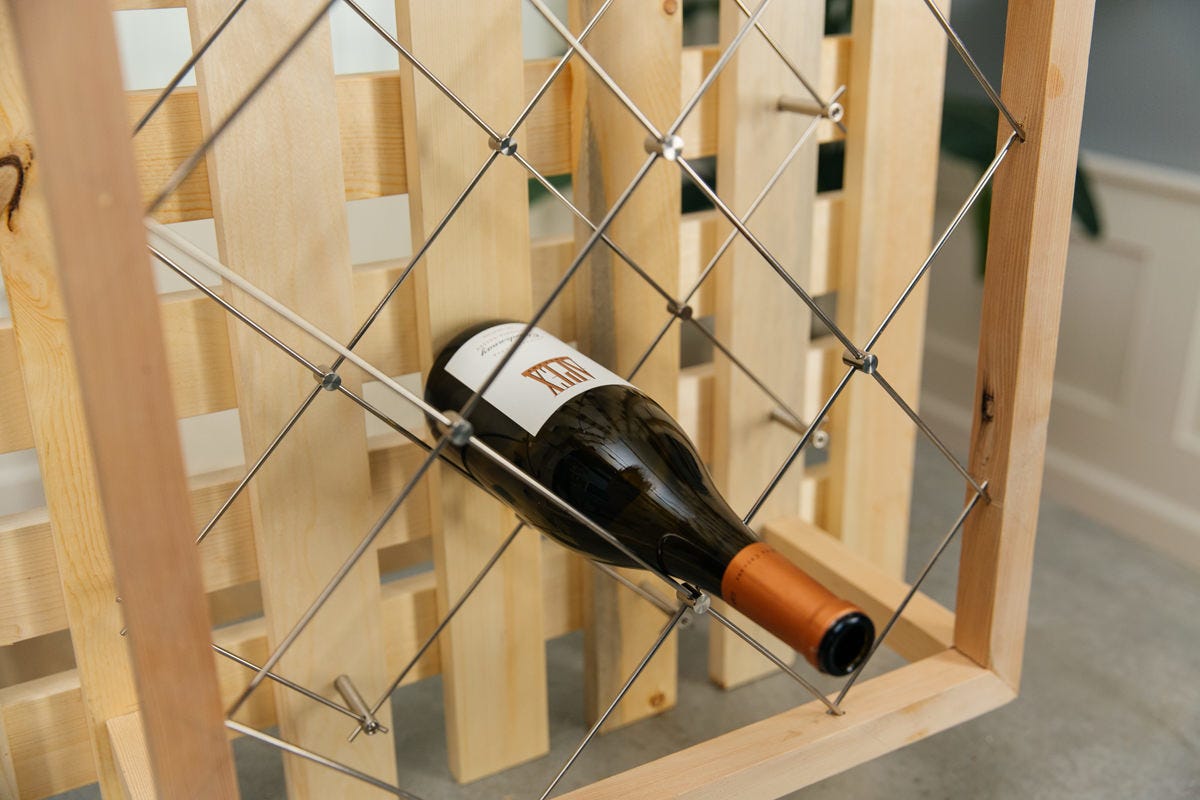
Rolling Planter
This rolling planter is ideal for a small Pacific Northwest yard, for two reasons. First, it's a great way to utilize your space. This planter could live on your deck, or your patio, or in an area of the yard where the dirt is too rocky or has too many roots to grow much. And secondly, because it's on wheels it can easily be moved to catch all of the summer sun. Ideal for growing something like vegetables that need a lot of sun to stay happy.

Decorative Utility Screen
This project uses a 2'x4' Modinex Decorative Panel mounted on a hinged frame. The goal is to visually screen something unsightly (a gas meter on our blog and a trash can in the show booth) but still allow easy access to the item behind.
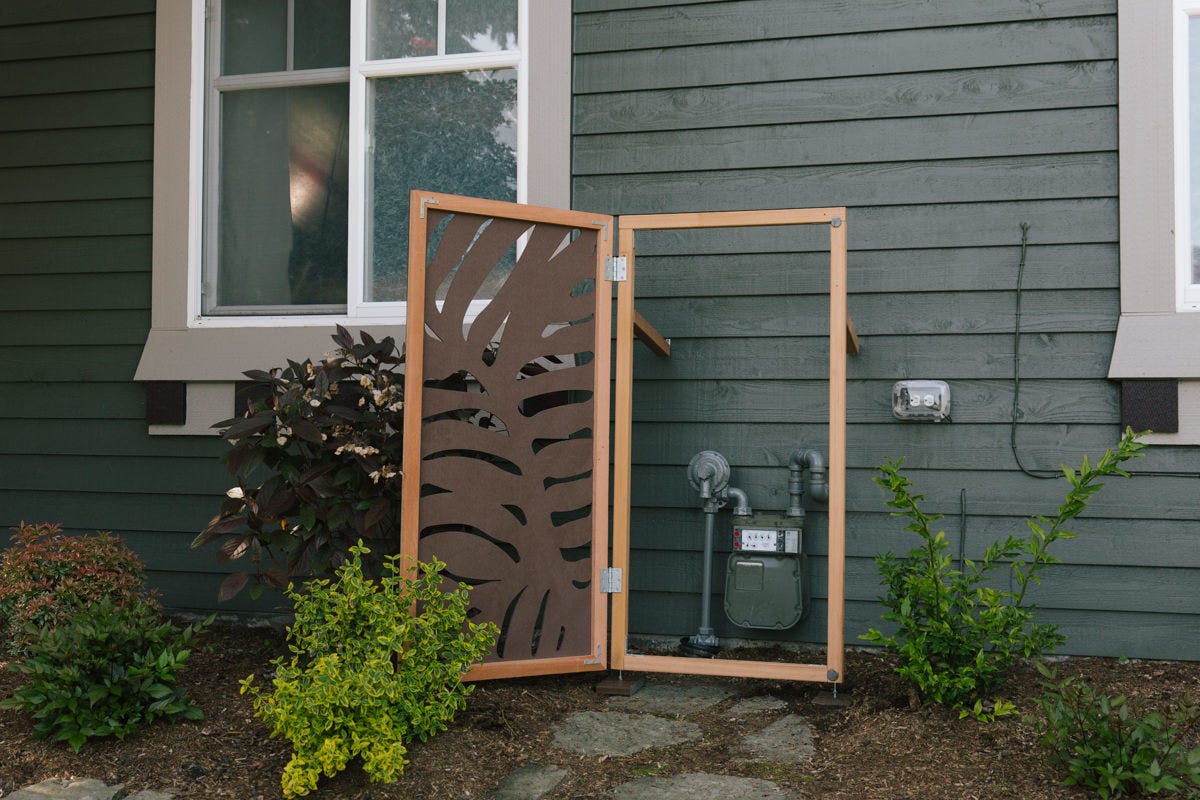
How to Make a DIY Wooden Lantern
This is a simple, quick summer project. It's obviously a lantern design sans glass (which does have its down sides), but the reason I did it this way was to keep it simple and cost effective. Buying a lantern like this from the store can cost over $50. If you're wanting the effect of lots of lanterns for a lower price, this is a great alternative.
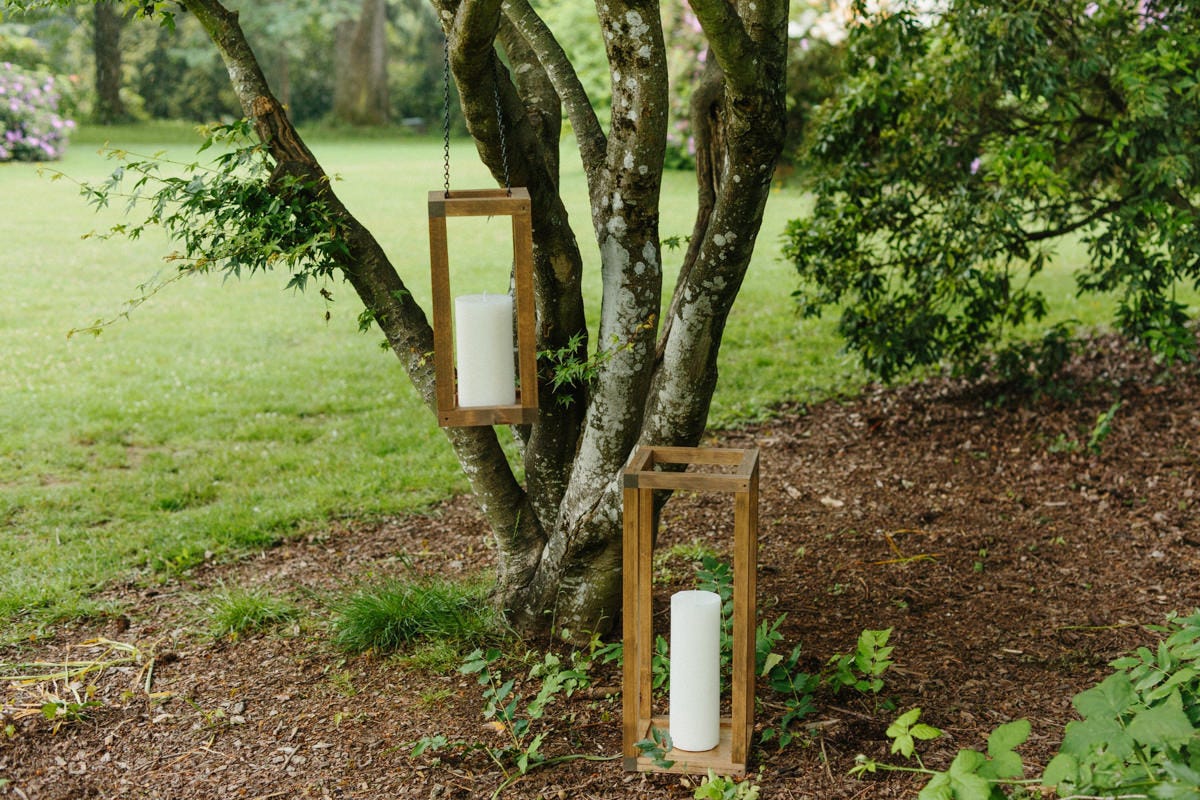
How to Make a DIY Citronella Candle
This is a fun, simple, summer project that you can scale to your level of expertise. If you're unsure of the candle making part, you can buy a citronella candle cheap and melt it down and pour it in. Or switch it around and just focus on the candle making. The bottom of this candle holder is separate from the top and attached with glue. It provides a bottom so that your table is protected from melting wax, and by trimming down the edges slightly, it makes it look like it's been routed out.
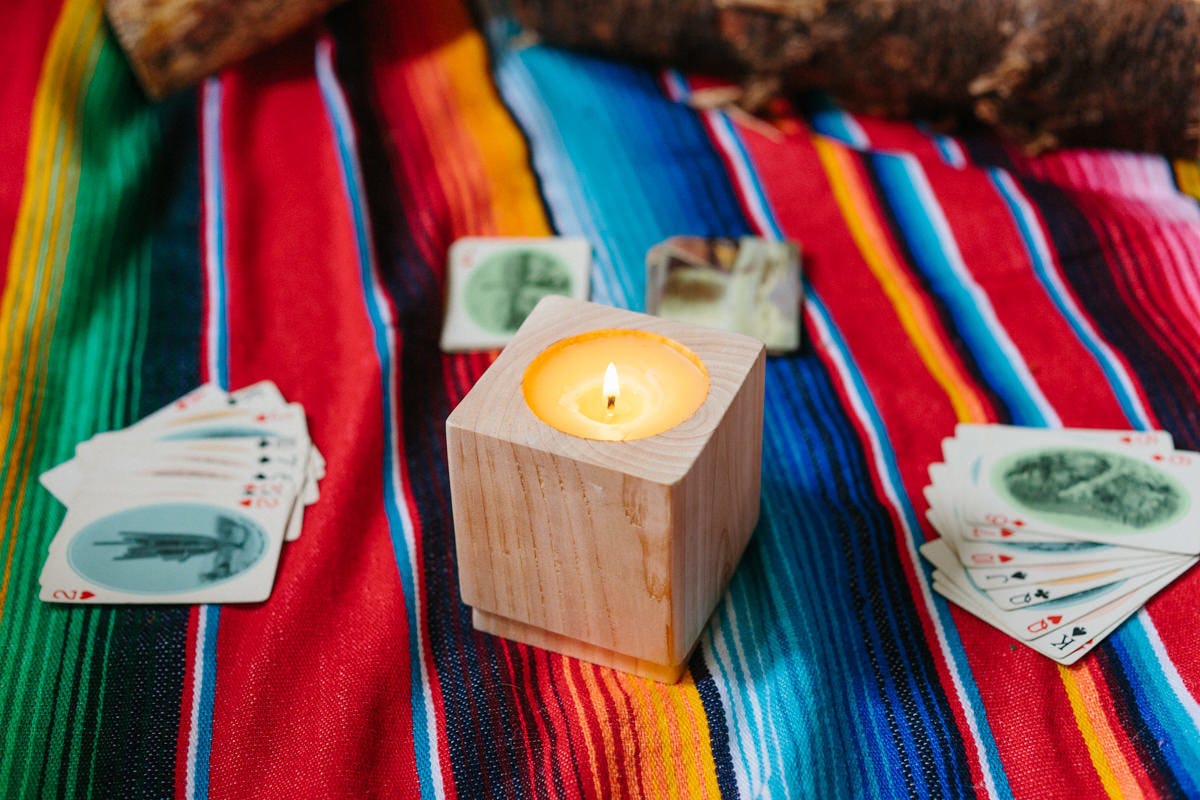
How to Make a DIY Throw Blanket
This is a super simple DIY project designed to pull in people who are comfortable working with their hands, but who maybe aren't as comfortable with working with lumber and power tools.
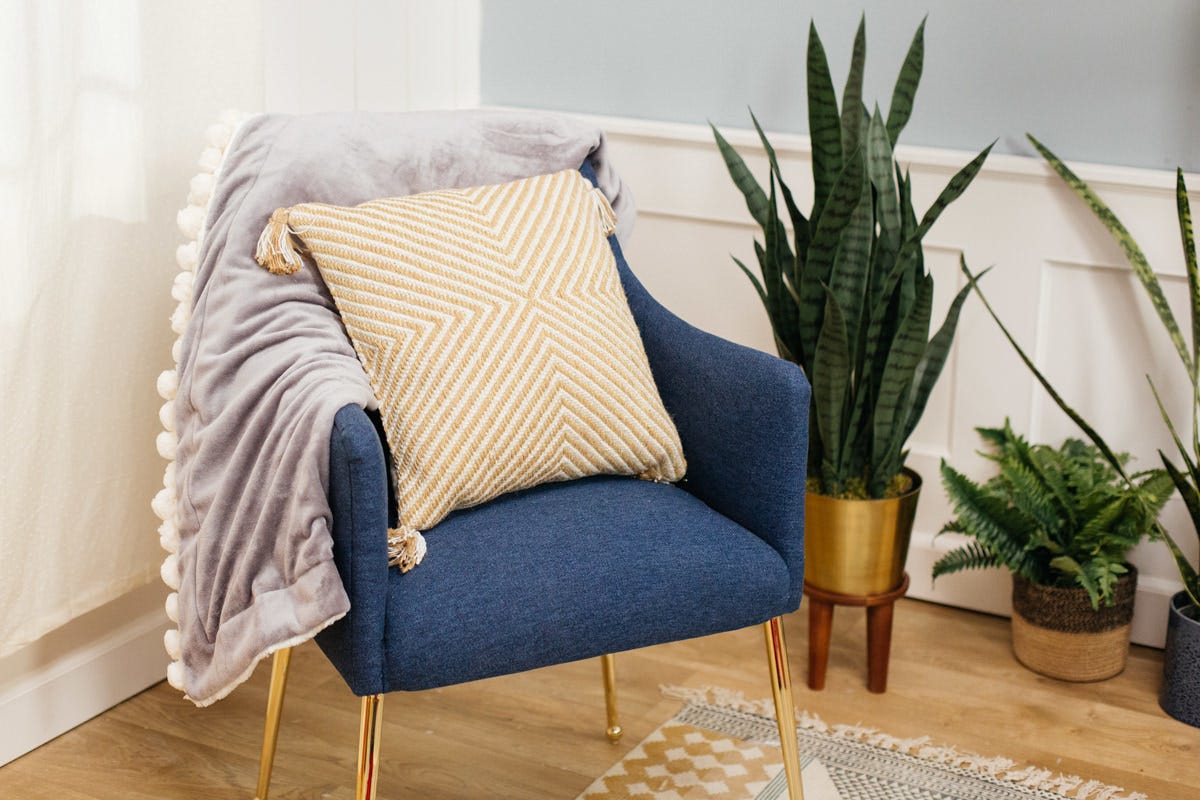
How to Make a DIY Mason Bee Beehive
This is a simple DIY project and a fairly simple way of beekeeping. Mason bees are native to our area and are a lot easier to keep than honeybees because they're solitary and therefore much lower maintenance, and they have a very mild sting which they hardly ever use. The mason bees will nest inside the paper straws in this structure in the spring and summer, and will lay their eggs in them in the fall. The straws can then be removed and kept in a dry cold place like a shed during hibernation and then brought back out in the spring. We used paper straws because having new tunnels each season keeps everything clean and reduces the risk of disease. There is lots more information and some great resources in this post.
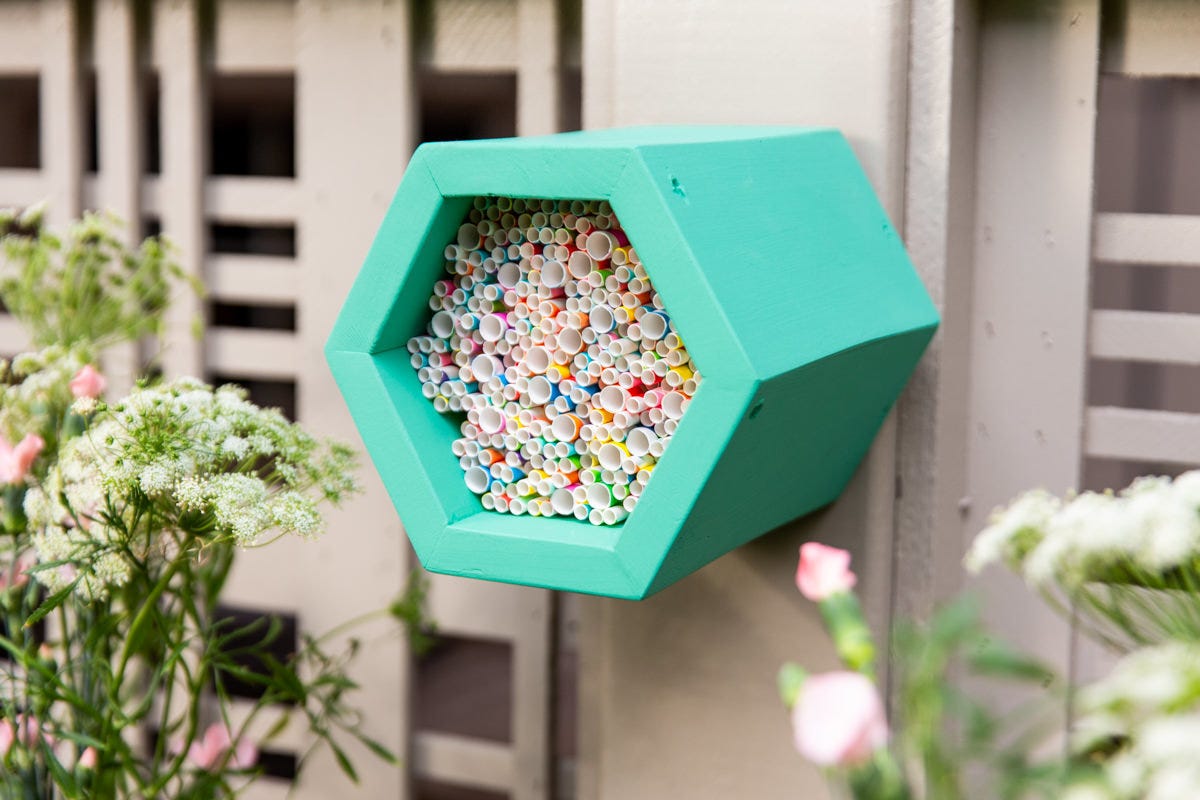
Plants that Attract Pollinators in the Pacific Northwest
This is a guest post written by Swanson's Nursery (who have a booth at the show). It focuses on what plants attract and help sustain pollinators and thrive in the Pacific Northwest climate. A win-win! In this post we have a graphic of the flowers talked about with some details on each one. This will be framed in the booth, and we will also have postcard handouts for people to take home with them.

How to Build a Strawberry Planter
This planter—with varying levels—is an easy and beautiful alternative to planting strawberries in a strawberry pot. It saves space in your garden and helps contain the strawberries from taking over your yard. The box tiers are attached by finish nails with the heads cut off, which are then fitted into pre-drilled holes and secured with Gorilla Glue.
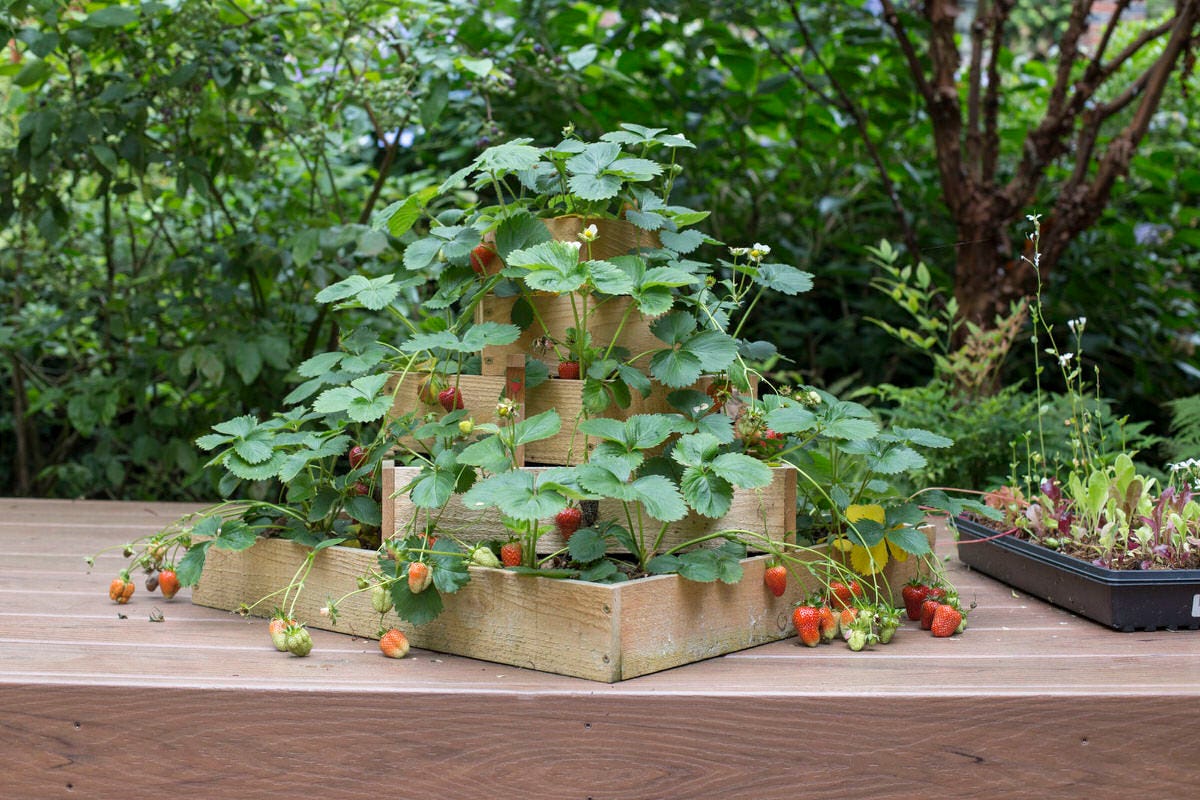
How to Build a Bat House
This is a fairly simple project, but a very exact one. Bats are very picky about their homes, and everything from how many screws attach the roof to the size of the compartments inside are all designed specifically to accommodate local bats. For people seeking further information, there are links in this post to the Bat Conservation and Management website (including an article about why some bat houses fail). It’s important to note that this house is spray-painted with black, water-based spray paint. We don’t carry water-based spray paint and people will need to source that elsewhere.
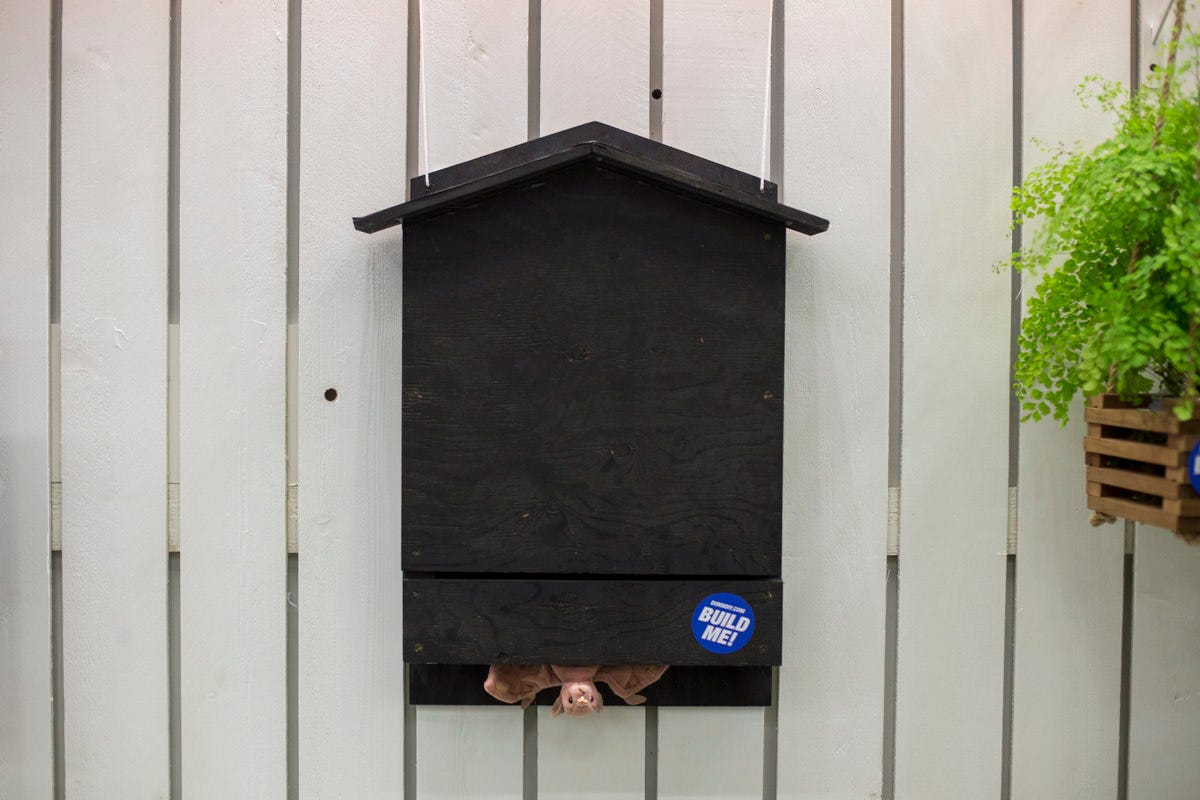
How to Build an Adirondack Chair
This project requires a steady hand with a jigsaw (mainly on the back legs), but also on some of the two-by-two back supports. A printed diagram for the legs is included in the post. This project—though somewhat intricate—is surprisingly flexible. Unlike building a box where the ends of boards are butted up against other boards, most of the pieces to this chair have open ends, meaning that this is a great project for making all cuts beforehand and not needing to adjust during assembly.
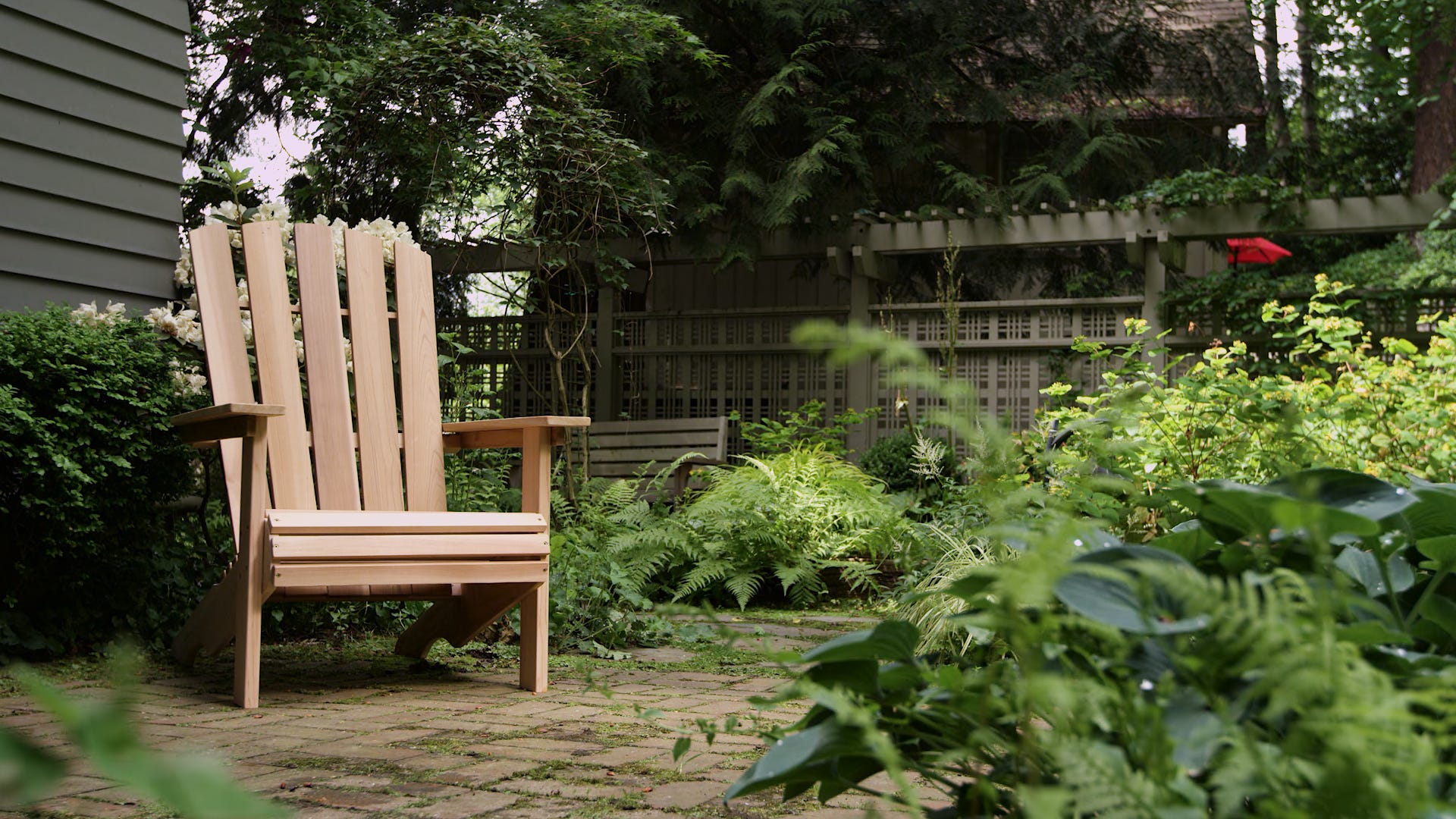
Growing Vegetables in the Pacific Northwest
This is a graphic and an article written for us by our friends at Swansons Nursery in Seattle. For people who want more info, Swansons will be at the show at booth #1218.

How to Build an Inexpensive Cedar Birdhouse
This is a very basic project for the price of one $2 cedar fence board.
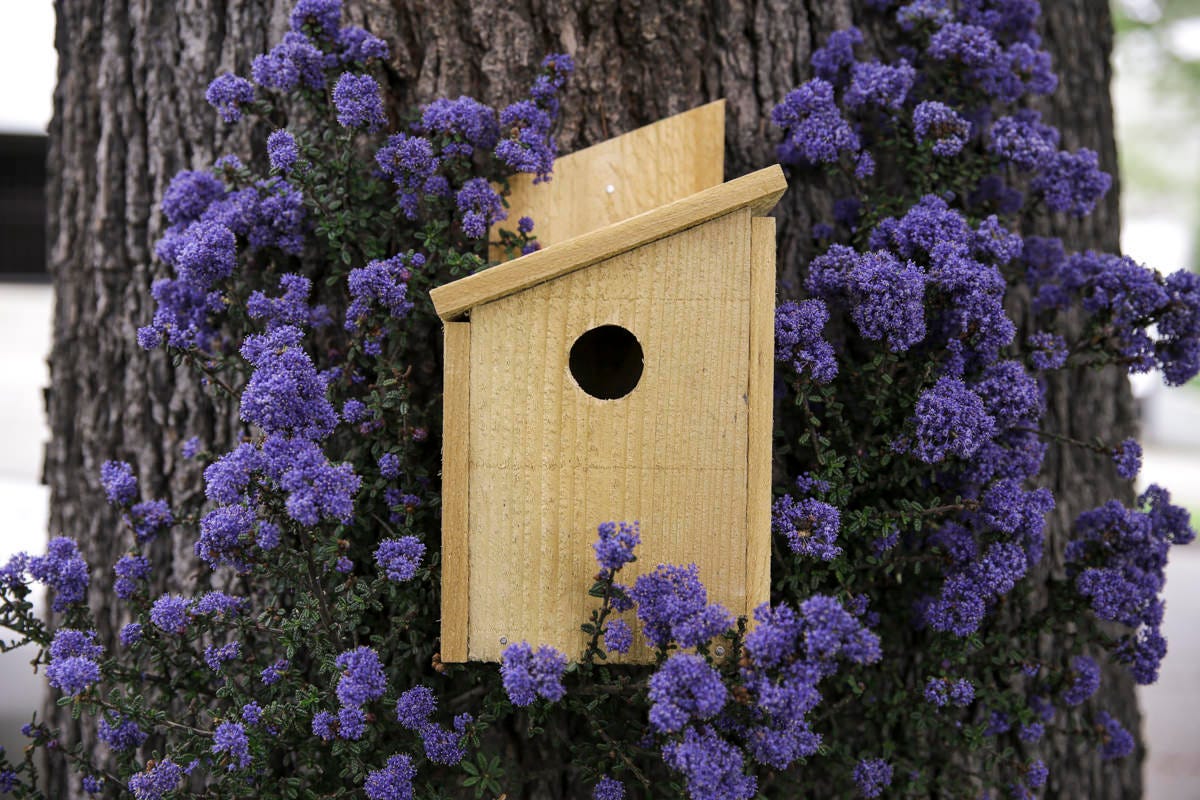
How to Make a Planter Bed
This is a simple planter bed made with two-by-six cedar decking boards. The video for this project will be on the TV in the booth, but we'll also have a variation of this using juniper instead of cedar.
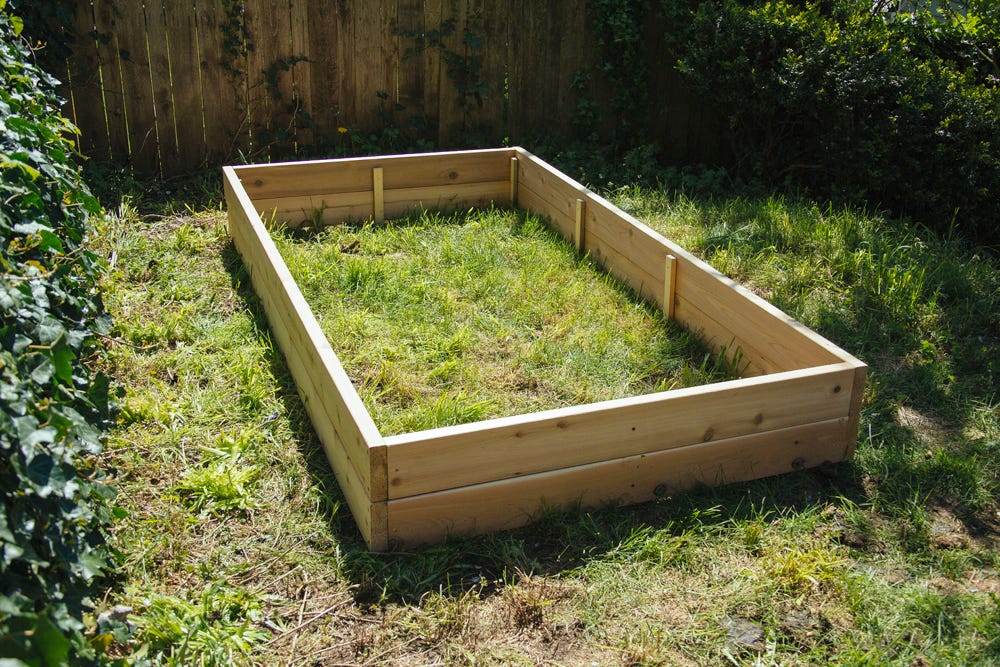
Cedar, Juniper, Or Pressure-Treated Wood: What to Use When Building a Raised Bed
The graphic from this article will be hung in the booth near the juniper planter bed. In the past, there has been a lot of interest in picking lumber for gardening beds, and in juniper especially. In general, people are very against pressure-treated lumber and aren’t interested in hearing anything to the contrary, but for those who would like more information, you can direct them to the site.
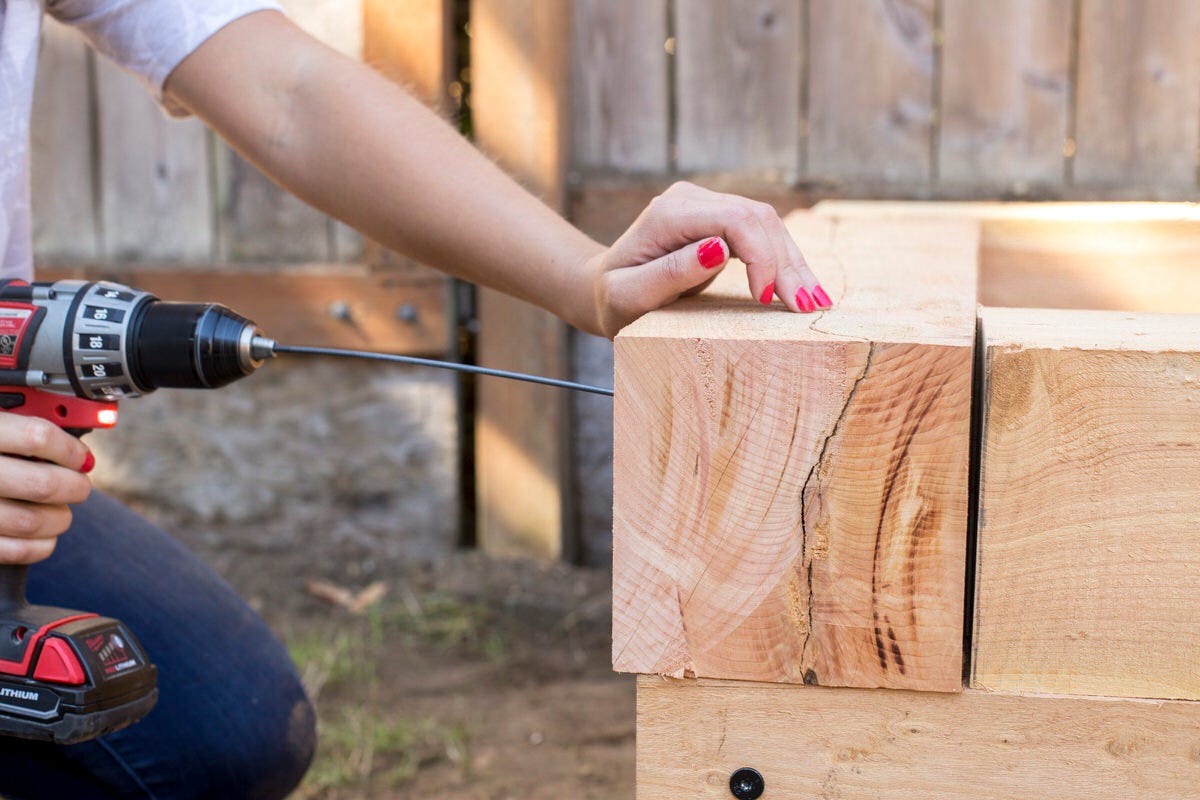
Dunn DIY Kids: Flower Box
This is a super easy project under $10 that only uses 1 x 6 - 8’ cedar fence board.
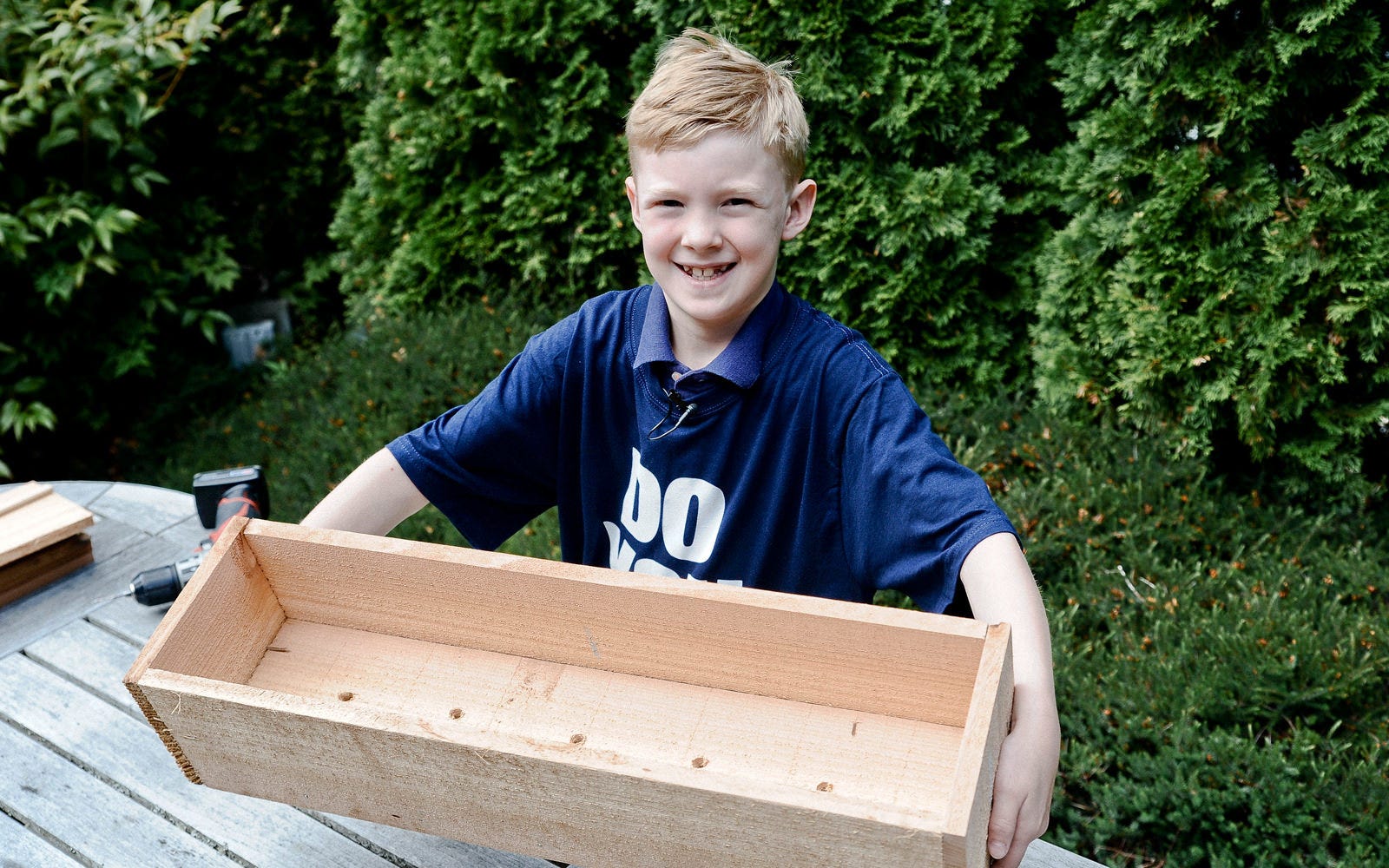
How to Make a Copper Pipe Boot Tray
As is usually true for this time of year, Seattle is in the middle of a weird almost-spring-but-still-cold-and-rainy weather pattern. This project is for everyone who’s still getting good use of their rain boots (and let's be honest, we'll probably be getting good use for months to come). We wanted to create a boot tray that looked good, was built to last, and that could also be shaken out and vacuumed. Enter: copper piping.
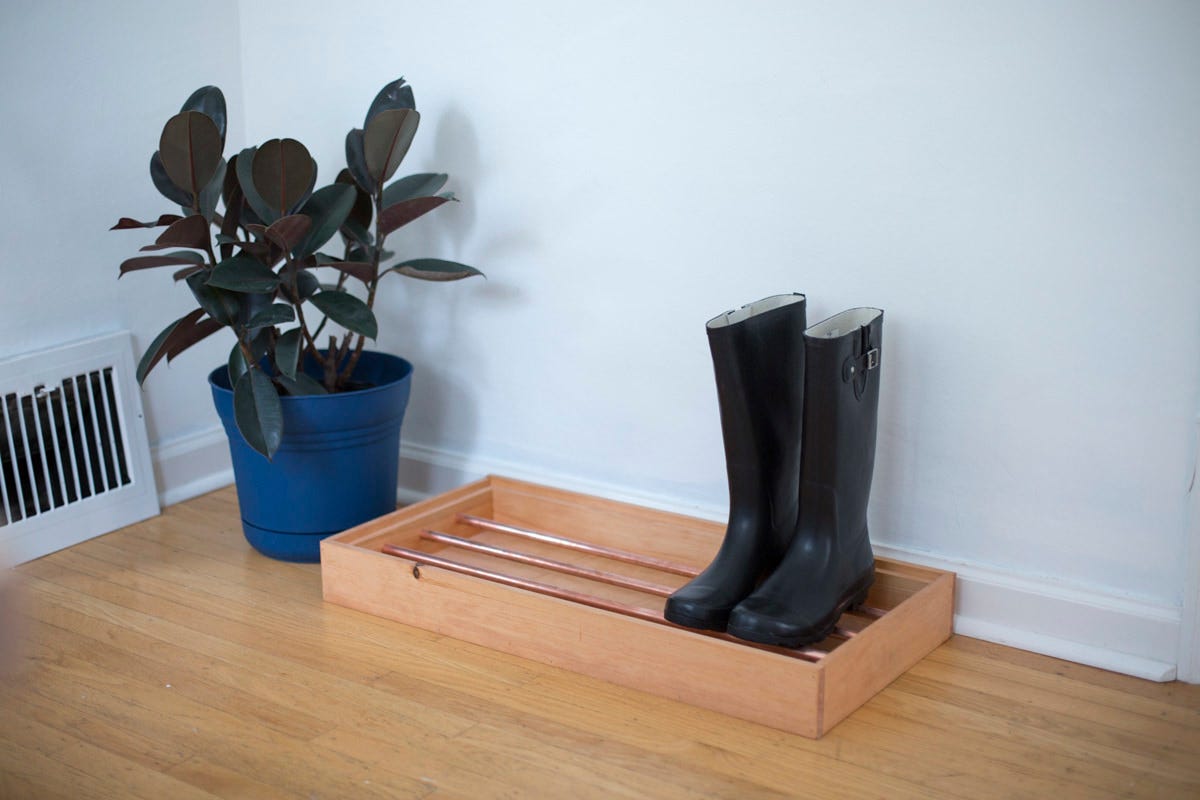
Festival Logistics
- The show is at the Washington State Convention Center, located at:
- Dunn DIY’s booth is #707, which is in the South Hall
- You can take public transportation. Parking is also available at and near the show. Plan for 15 minutes to get to the booth from your car. Some notes about parking:
- The garages at the convention center have 6’5” and 6’9” height restrictions, so if you drive a tall vehicle, you may need to park in a different lot
- Some lots fill up, so you may have to park a few blocks away (allow time)
- Bring an umbrella if it’s raining
- Find additional information about getting to the festival here
- A wristband is your entrance ticket to the show. These bands will be sent out via yard mail and arrive at your home yard.
- Attire for the festival is casual. Be sure to wear your Dunn DIY festival hoodie*. Jeans are fine. You’ll be on your feet a lot, so wear comfortable shoes, and consider layering in case you get chilly (the temperature is set to accommodate the gardens). Name tags are optional. *Your outer-most layer will be a DunnDIY full-zip hoodie, which will be sent to your home branch before the show.
- You will be compensated for the hours you work in the show booth and will receive a flat fee (a.k.a. per diem) to cover expenses such as travel, parking, and food—you will not be compensated for commute time. There will be a timesheet at the booth for you to sign in and out on. The per diems are dependent on your home yard and are paid to you in cash by your yard manager:
- $60 for LK, GL, NP
- $65 for BV, SH, RT, KL
- $70 for LW
- $75 for EV
Additional questions or comments? Please don’t hesitate to reach out! Contact Kirsten at kirstend@dunnlumber.com or (206) 446-8297, or Todd at todd@dunnlumber.com or (206) 618-7786.
For additional information about the Northwest Flower & Garden Festival, visit gardenshow.com.


